1. Where to get information about REPOPSI?
On the website.
REPOPSI was launched in 2020; in 2023 it underwent improvements as part of a project supported by EOSC Future and Research Data Alliance and, as a result, there are now new and easier ways you can use it.
Therefore, whether you are new to REPOPSI or not, your first stop should always be the new website: www.repopsi.f.bg.ac.rs/en/
Watch these short video clips in which REPOPSI team members present:
- REPOPSI basics: click to start the video (7 min; in Serbian)
- Basics of the REPOPSI improvement project: click to start the video (5 min; in Serbian)
- The new REPOPSI website: click to start the video (4 min; in Serbian)
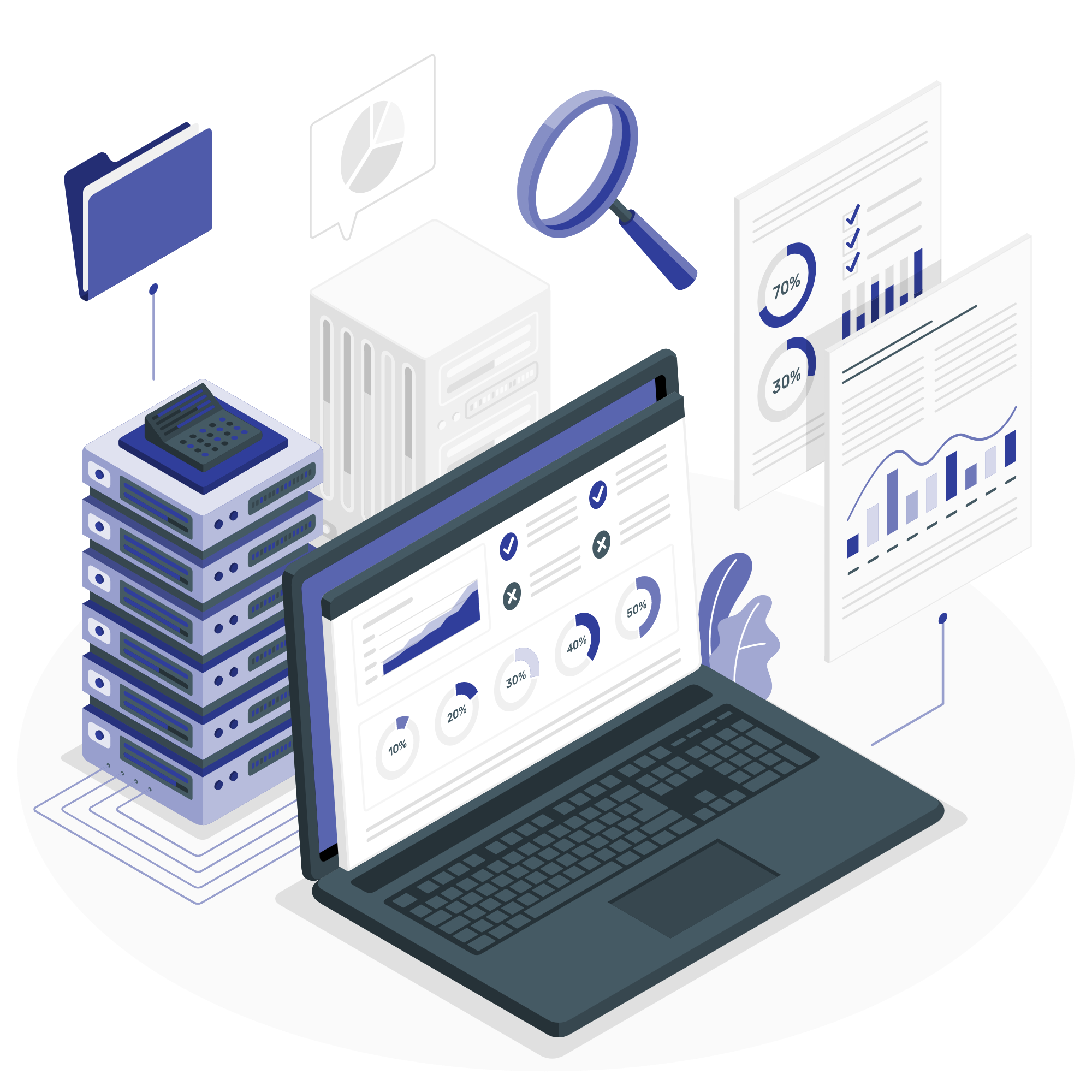
2. How to find instruments in REPOPSI?
Using the web application, online spreadsheet or inventory files.
You can search REPOPSI in three ways, which are described on the How to search REPOPSI page.
We recommend that you use the interactive web application, which allows intuitive, fast, and easy browsing of the Repository.
The two most important things to keep in mind when using the REPOPSI search application are:
- Enter keywords in English, not in Serbian
- Close the app window when you are done
Check out this video clip with a short demonstration of how to use the app:
- click to start the video (8 min; in Serbian)
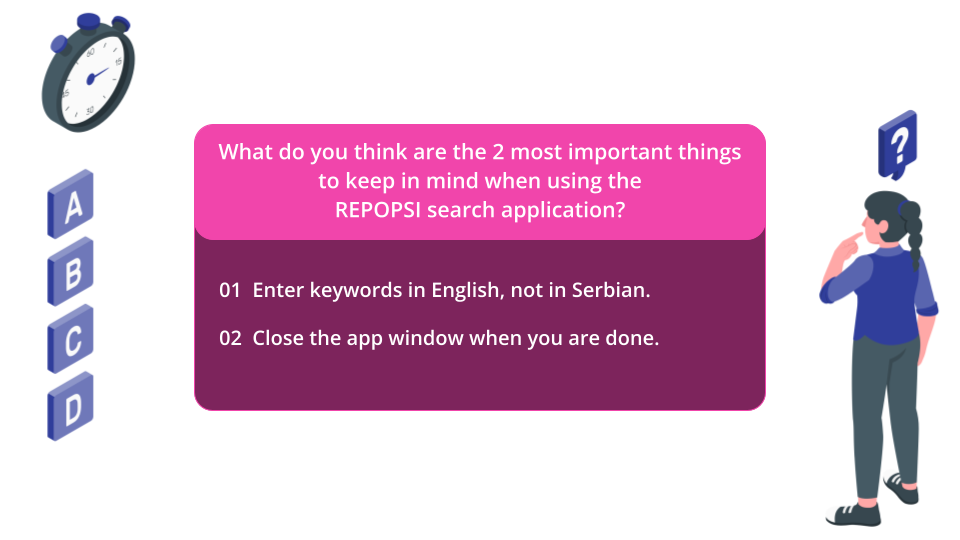
Most instruments are available in full in REPOPSI. For them, the column Where to find the instrument? in the app will read Repository , with a link in the following format: https://osf.io/xxxxx. Click the link to download all of the files associated with an instrument.
Watch this video clip with a short demonstration of how to download the files:
- click to start the video (2 min; in Serbian)
3. Under what conditions can you use the instruments?
You may freely download and use the instruments for non-commercial purposes, provided you cite the author of the instrument and its translation.
REPOPSI can be freely accessed and used by everyone. You can download all of the instruments in the Repository without asking for permission. The instruments are opened under the Attribution-NonCommercial-ShareAlike 4.0 International (CC BY-NC-SA) license. This means that, unless otherwise specified, you may use the instruments for non-commercial clinical, educational, and research purposes, with proper citation of the author of the instrument and its translation.
Below is an example of citing an instrument.
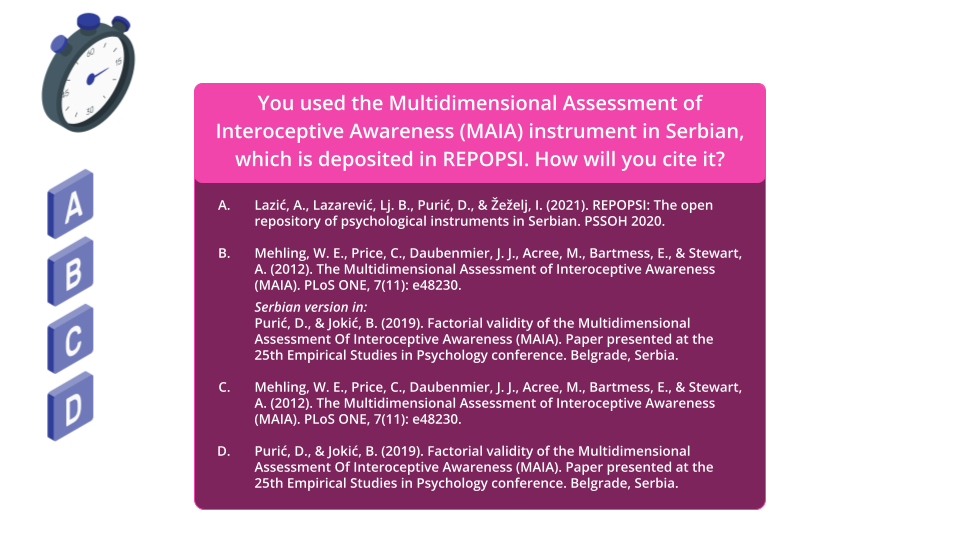
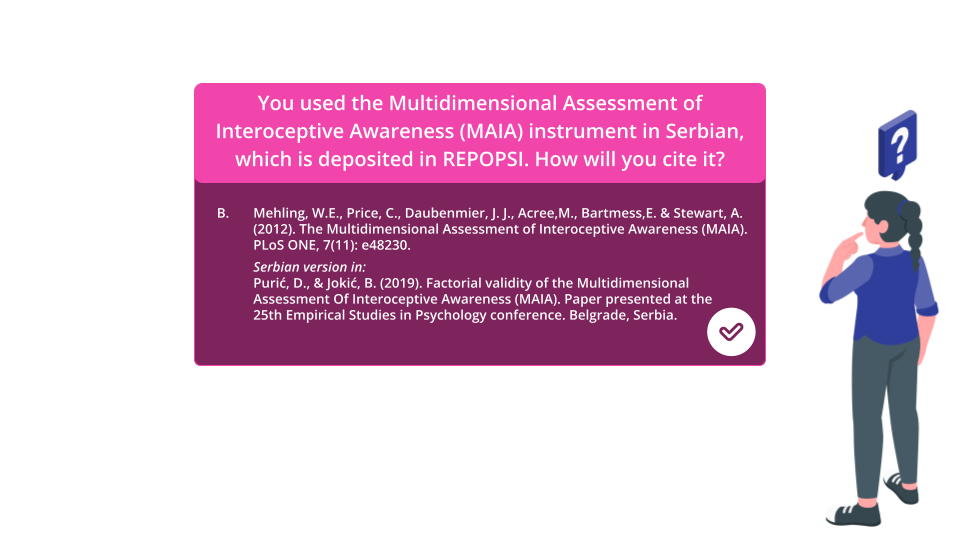
The most important thing to remember is that when you use an instrument translation, you should cite both the authors of the original instrument (i.e. the instrument in the language in which it was first published) and the authors of its translation.
Watch this short video clip in which we go through some common mistakes when citing instruments:
- click to start the video (4 min; in Serbian)
4. How to store your instruments in REPOPSI?
Fill in the online REPOPSI contribution form.
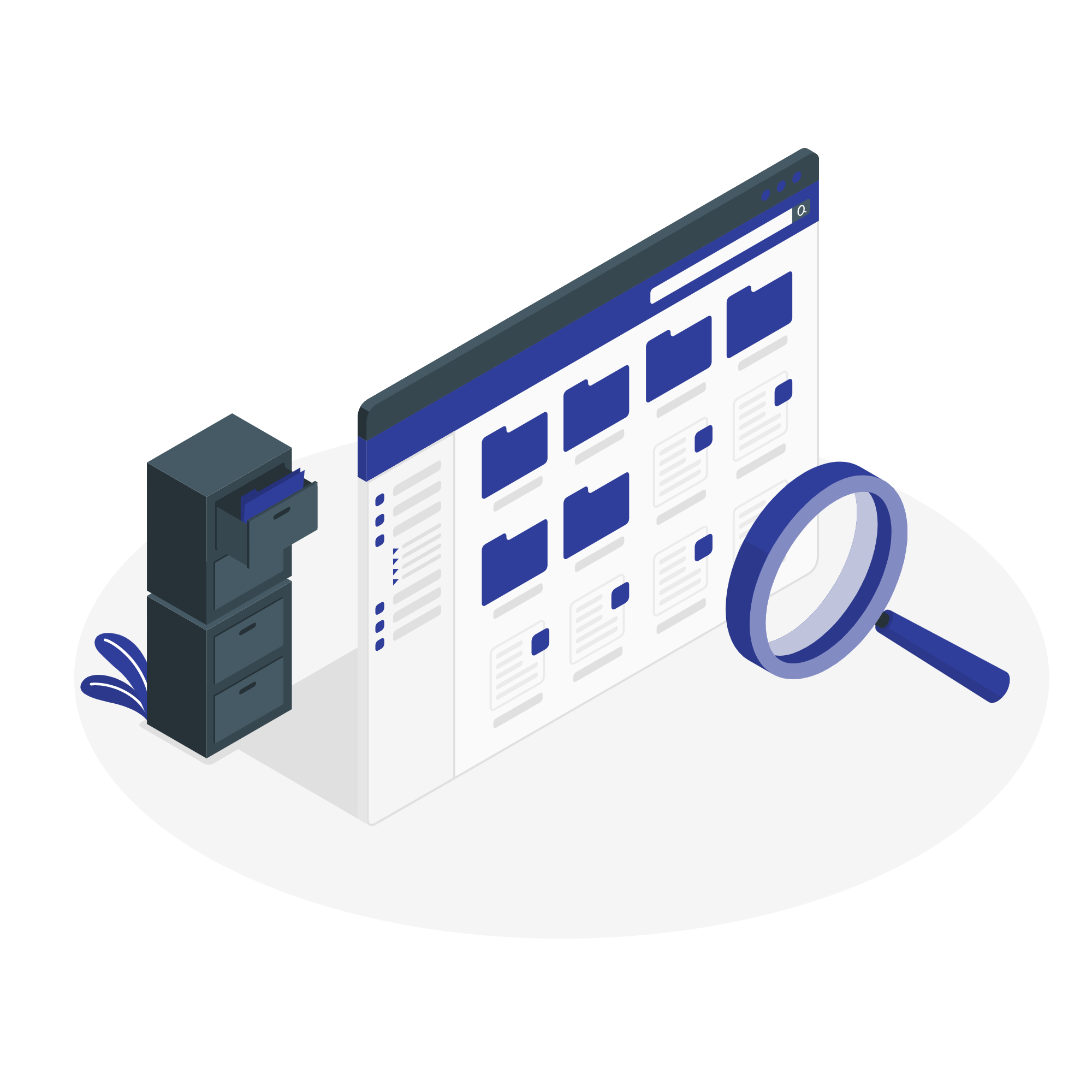
Anyone who wants to can make their psychological instruments and instrument translations openly available in REPOPSI.
REPOPSI is primarily intended for instruments that have been translated into Serbian or adapted for the Serbian population, but also for all instruments developed by scientists from Serbia and the region (in any language).
If you would like your instrument or instrument translation to be openly available in REPOPSI, please fill in this online form.
At the beginning of the form you can read more about:
- Which instruments are suitable for REPOPSI
- What the form looks like and what you can prepare in advance
- What to do if the instrument cannot be made fully open in REPOPSI, but you want REPOPSI users to know about it
Watch this video clip demonstrating how to fill out the contribution form:
- click to start the video (20 min; in Serbian)
You’ve made it through the guide. Now you know how to use REPOPSI!
Parts of this guide were originally prepared for an online workshop organized in cooperation with the Open Science Community Serbia (OSCS) on June 21, 2023.
You can watch the recording of the entire workshop (in Serbian) here.
You can download the slides from the workshop (in Serbian) here.